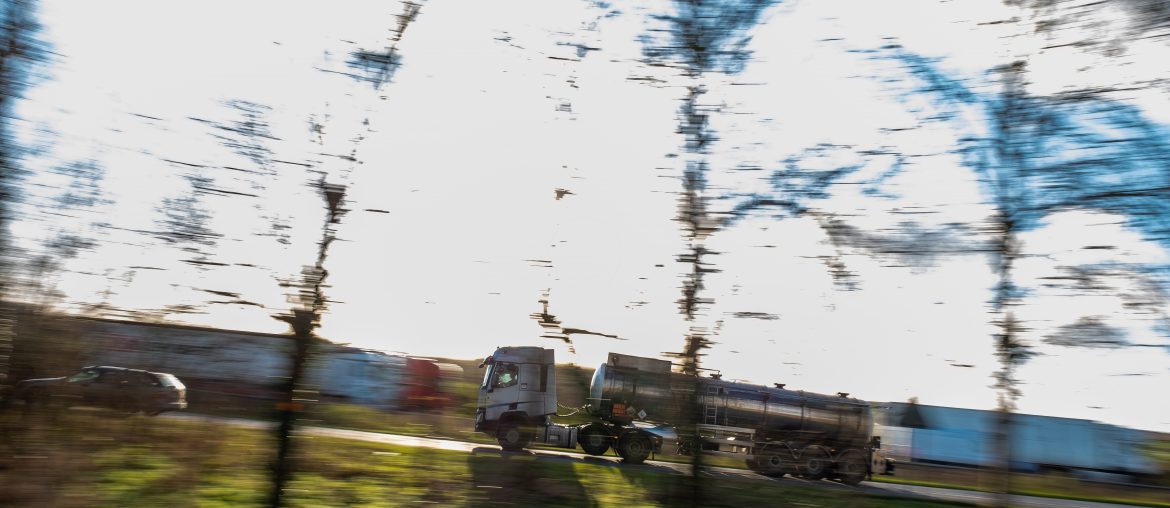Every day, across the length and breadth of the UK, dangerous goods are carried on a wide range of commercial vehicles. Most of these dangerous goods are carried in vehicles specified for the task, with equipment on board to manage problems and a driver fully trained and assessed to carry that type of goods representing that risk.
This is all because of an international regulation called the ‘Accord européen relatif au transport international des marchandises Dangereuses par Route‘ which was agreed in 1957. In English, it’s the European Agreement Concerning the International Carriage of Dangerous Goods by Road and is shortened to the ADR Regulations. These are partnered by the IATA for air freight, the IMDG for sea freight and RID for movements by rail.
Not all dangerous loads fall under the scope of the ADR regulations. There are two significant ways that goods which would otherwise be dangerous can fall out of the scope of the ADR regs.
- Limited Quantities
- Excepted Quantities

Limited Quantities Dangerous Goods
The Limited Quantities exemption is worked on the size of the individual containers of product in the load. So for example an IBC of bleach will fall under ADR because 1000l of Class 8 corrosive products represents a very high risk to members of the public and to staff if it becomes breached. A 1l bottle is less of a risk, even if multiple individual bottles become breached in an incident.
Not all dangerous goods have a limited quantity; some are just too nasty for a driver without robust training, an undertaking without specialist advice and a vehicle without kit to carry. Others do and information on what goods can be carried under the exemption is found in the Packaging Group assigned to each product by the UN.
Some products are restricted to 333kg, others to a tonne, some have no restriction in smaller packages. There are also calculations to be done if you are moving mixed loads of dangerous goods, because some may be more hazardous than others and you need to know if the load falls into scope of the regulations despite being under a tonne in weight.
Limited Quantities – What you need to do.
Unlike loads which fall fully into scope of the ADR regulations, there are not long lists of kit that need to be carried. Instead your vehicle just needs to have a 2kg dry powder fire extinguisher fitted. The driver needs to be aware of the regulations but does not need to be fully licensed.
Regulations also require type approved packaging for even Limited Quantities of dangerous goods. The bottles, bags and even the cases have to meet minimum standards to carry each product and the UN is responsible for testing the packaging and issuing approval.
You still have to ensure the security of the load. You also need to be aware that some goods can’t take the shortest route from A to B because of ‘tunnel code’ restrictions.
The requirement for awareness training also extends to include warehouse staff who handle the products too.
Usually there are no marking requirements that apply to a load of LQ products. That changes when there are more than 8 tonnes of dangerous goods involved in the load. So if your driver collects 26 pallets of squirty cream, the load needs to be marked because you’ve got over 8 tonnes of dangerous goods aboard.

The marking should be on every package containing dangerous goods on the load. Once over 8 tonnes of LQ product, you also need to affix Limited Quantities ‘Placards’ to the front and rear of the vehicle. In the event of an accident, this informs the emergency services that the vehicle is carrying some sort of dangerous goods and has to be treated differently.
You also need to have details of the dangerous goods carried on the delivery note or CMR note so the driver can inform the emergency services of exactly what they are dealing with in the event of a mishap.
Excepted Quantities
The Excepted Quantities rule is slightly different. Firstly, there is no requirement for the cases on a load to be approved by the UN. That isn’t the only difference here though:
Quantities of goods can vary wildly from just a few grams upwards depending on the dangerous substance involved. However, the regulations only allow 1000 individual units of the product to be carried under the exemption.

Most of the goods that travel under the EQ exemption are items with internal batteries and you see the excepted quantities mark quite a lot when you are working with parcel carriers and online retailers. You don’t see it as much in general haulage.
Again, drivers and warehouse staff need to be aware of the regulations but don’t need to be fully trained to carry the freight. Vehicle requirements are even less stringent.
Would you like to know more?
A dangerous goods awareness course is a great way to find out all the information you need to make the right decisions about travelling LQ and EQ loads. Most Dangerous Goods Awareness courses also attract 7 hours of Driver CPC Periodic Training credit. Our dangerous goods awareness course is next running on 22/01/2022 in Barnsley.





